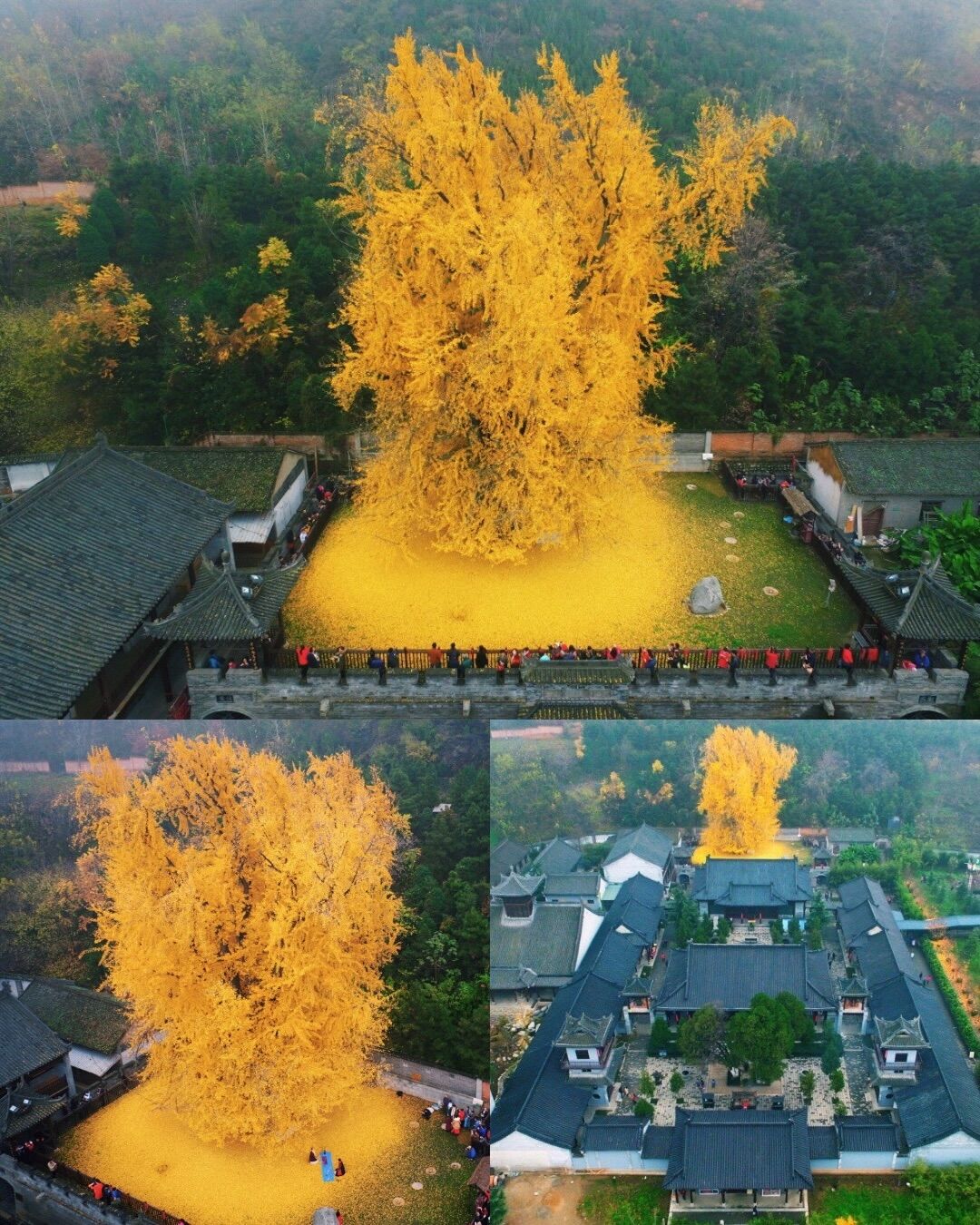Nestled in the heart of the Zhongnan Mountains, near the revered Gu Guanyin Buddhist Temple, stands an ancient marvel— a 1,400-year-old ginkgo tree. This towering, ancient tree has become a symbol of endurance and continuity, drawing visitors from all corners of the world who come to witness a breathtaking annual phenomenon: the shedding of golden leaves that transforms the temple grounds into a radiant sea of yellow.
The Golden Cascade of Autumn
Each autumn, typically in mid-November, the ginkgo tree begins to shed its vibrant green leaves, initiating a remarkable transformation. The once green foliage turns a brilliant shade of yellow, creating an awe-inspiring spectacle as the tree releases its golden leaves to the ground below. The temple grounds become covered in a stunning carpet of gold, a celebration of autumn’s beauty that captivates all who experience it.
This natural display is not just a visual delight, but also a reminder of the passage of time, as the ginkgo tree undergoes its seasonal metamorphosis. For centuries, this event has signaled the arrival of fall in the Zhongnan Mountains, drawing people to witness the timeless beauty of nature’s cycles.
A Living Link to the Past
Often referred to as a “living fossil,” the ginkgo tree has withstood the test of time, surviving for over 1,400 years. Its lineage stretches back more than 200 million years, making it one of the oldest tree species in existence. The ginkgo’s resilience to environmental changes and climate shifts reflects the enduring nature of life itself, harking back to a time when dinosaurs roamed the earth.
The ginkgo tree’s historical significance is immeasurable, and it has become a symbol of survival and strength. Despite the changes in the world around it, this ancient tree stands tall, offering a direct connection to an era long past. Its perseverance through centuries of changing landscapes is a powerful reminder of nature’s ability to endure.
The Sacred Connection
The ginkgo tree, located within the sacred grounds of the Gu Guanyin Buddhist Temple, serves not only as a natural wonder but also as a spiritual symbol. Its steadfast presence in the temple reflects a deeper meaning of continuity, resilience, and the passage of time. The tree’s enduring strength has made it an integral part of the temple’s heritage and a focal point for those seeking spiritual connection.
As the ginkgo’s golden leaves fall gracefully to the ground, they create a peaceful, almost meditative atmosphere that draws visitors into the sacred space. The sight of the leaves drifting down, one by one, serves as a reminder of the cyclical nature of life and the quiet beauty of the seasons.
The Golden Ocean
As the leaves descend, they transform the earth beneath the tree into a golden ocean of foliage. This stunning display creates a serene landscape that invites onlookers to pause and reflect on the harmony between the tree, the temple, and the surrounding nature. Captivating images of this spectacle have circulated widely online, further cementing the ginkgo tree’s place as a symbol of both natural beauty and historical importance.
The visual narrative of the golden leaves falling in front of the temple paints a picture of timeless symbiosis between the natural world and human history. The connection between the ancient tree and the sacred temple grounds is one that transcends time, offering a glimpse into a living history that continues to thrive despite the passing centuries.
A Reminder of Resilience and Continuity
In an age of rapid change, the 1,400-year-old ginkgo tree stands as a powerful reminder of nature’s resilience. The annual spectacle of golden leaves falling in front of the Gu Guanyin Buddhist Temple is more than just a seasonal event—it is a symbol of the enduring connection between the past, present, and future.
This ancient tree’s display of gold each autumn serves as a reminder to appreciate the continuity of life and the cyclical nature of the world around us. As the ginkgo tree sheds its leaves, it invites us to reflect on the enduring spirit of nature, the passage of time, and the beauty of continuity.

